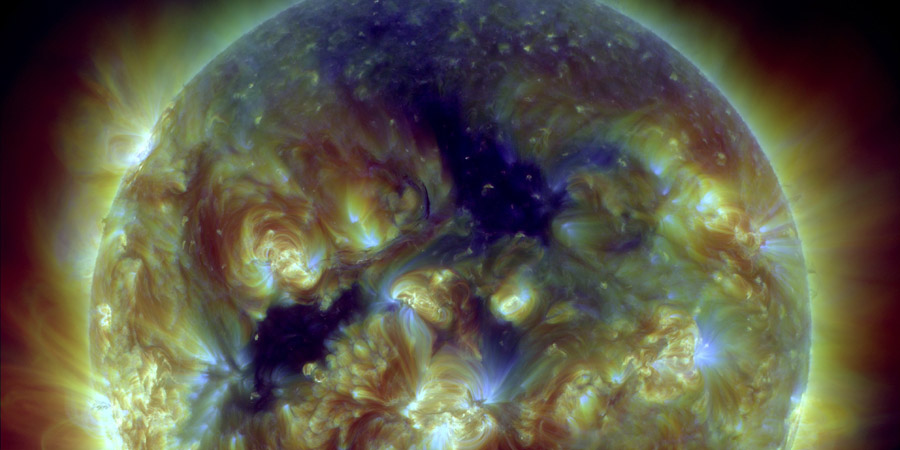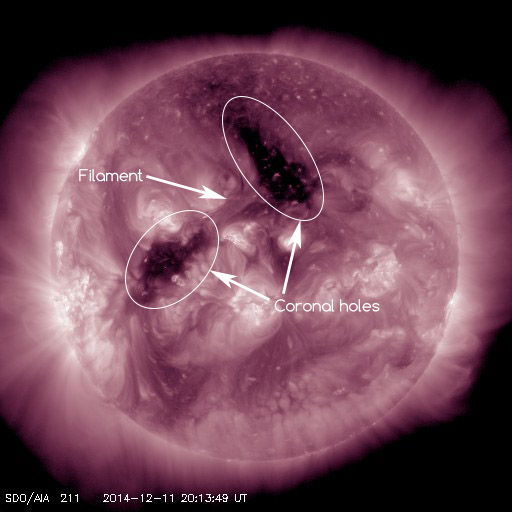Low solar activity, coronal hole stream incoming
Thursday, 11 December 2014 20:40 UTC

Solar activity remains low with only C-class solar flares being reported. Sunspot region 2230 that we wrote about on Tuesday did not develop further and now has a fairly simple Beta-Gamma magnetic layout. We expect flaring activity at the C-level with only a very slight chance for an isolated M-class event as none of the sunspot regions currently on the earth-facing solar disk are very impressive. We keep our attention on the Sun as we can also see that a coronal hole has passed the central meridian and is expected to cause the arrival of a high speed solar wind stream in about two days from now with likely another round of enhanced auroral conditions on high latitudes in the week ahead.
Coronal hole stream incoming
A coronal hole located at 25 degrees north has now passed the central meridian and is expected to cause the arrival of a high speed solar wind stream on Saturday, 13 December. This coronal hole has an extension which is connected to another coronal hole on the solar equator. With these two coronal holes on the disk we can conclude that we will likely see enhanced solar wind conditions for multiple days starting on 13 December. Geomagnetic stroming is not expected but enhanced auroral conditions at high latitudes will be likely once the stream arrives.

Another solar feature worth noting is a filament channel between the two coronal holes which looks to be unstable. This is something to keep an eye on as an eruption from this filament could launch a coronal mass ejection with an earth-directed component.
Images: NASA SDO.
Thank you for reading this article! Did you have any trouble with the technical terms used in this article? Our help section is the place to be where you can find in-depth articles, a FAQ and a list with common abbreviations. Still puzzled? Just post on our forum where we will help you the best we can!
Latest news
Latest forum messages
Support SpaceWeatherLive.com!
A lot of people come to SpaceWeatherLive to follow the Sun's activity or if there is aurora to be seen, but with more traffic comes higher server costs. Consider a donation if you enjoy SpaceWeatherLive so we can keep the website online!

Space weather facts
| Last X-flare | 2024/03/28 | X1.1 |
| Last M-flare | 2024/04/23 | M2.9 |
| Last geomagnetic storm | 2024/04/19 | Kp7 (G3) |
| Spotless days | |
|---|---|
| Last spotless day | 2022/06/08 |
| Monthly mean Sunspot Number | |
|---|---|
| March 2024 | 104.9 -19.8 |
| Last 30 days | 125.4 +21.1 |


